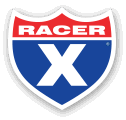One of the world’s greatest cities, San Diego greets us for round six. Many will remember that this round was long held at Qualcomm Stadium, a venue further away from today’s downtown location, and arguably more convenient for getting in and out. The local California moto crowd has a point there, as they were able to jump on the 15 and head home rather easily. For me, personally, that was never a factor. I always flew into town and was renting a car, staying in a hotel, etc.
With that in mind, I love Petco Park! The downtown baseball venue has such a great atmosphere. It’s located in the heart of the Gas Lamp District, the place to be when enjoying a weekend in San Diego. There are restaurants, bars, and hang out spots that Qualcomm just didn’t have. For fans visiting town, being able to stay nearby and walk to the stadium is a huge plus, also. While I know this argument will never be won with many, I think the move downtown has been a huge win. It’s completely changed my opinion of this race. Previously, this was just another middle of the road California round but has now jumped into the top half of the best events of the championship.
Dirty Little Secrets
The start for San Diego made me immediately take a deep breath and whisper “here we go.” While nothing is certain, I absolutely believe that this type of start is the most likely to cause first turn crashes. They may not be violent crashes (see: good) but the short straight and flat 90-degree corner both contribute to incidents. The short length doesn’t give riders room to separate, often resulting in locked handlebars as riders are hoping to brake and turn. Those locked bars cause riders to continue on going straight and unable to slow down. That in turn forces riders deeper into the turn and more likely to push through the flat 90-degree left. When riders push off the track, they encounter plywood and all sorts of surfaces they would like to avoid. Even if we avoid any sort of crash all night, I have seen too many riders blow off the track and crash with this start variation. I love the big, wide 180-degree first turns that have become the norm. Baseball stadiums often contribute to this type of start due to the floor shape but last week proved it’s possible.
The first rhythm section is pretty basic and that’s generally a good thing when dealing with heavy traffic on the start. Riders will find some sort of rhythm here but the most important aspect will be to land on the downside of the last jump. If they are forced to single into the corner, it disrupts the corner flow and momentum. Exiting the next bowl berm, there is a basic double and then the first of two consecutive supercross triples. These should be pretty easy and the only real focus will be to set themselves up for the turns while jumping both. That involves jumping at an angle that enters the corner on the outside and carries momentum through the corner.
After a 90-degree left, there is a big rhythm section waiting. There are two ways to approach this section. I think the most likely will be for riders to stay inside in the corner and double-triple-triple into the corner. I think that’s the ideal choice because it allows riders to protect the inside line. The other option would be to rail the berm and triple into the section. Riders would then have to choose between a 2-3 or 3-2 to exit the section.
Possibly the most critical sections of the racetrack come next with back to back whoop sections. San Diego is a complete toss-up when it comes to whoops. We have seen some of the toughest whoops on record (2000, 2012 come to mind) but also years where they were ho-hum. With a back-to-back set, the possibility for a high degree of difficult is certainly there. If both sets are built big and far apart, look out for drama. These two sections also present great passing opportunities with bowl berms both before and after them.
Next up is a sand corner and if you’re a Staging Area veteran, you know that I hate sand corners. They almost always form one line and prevent passing. Dirt Wurx did a good job of creating two lines at Glendale so hopefully they can enact the same plan.
After the sand are four jumps of the same size and one small bump into the corner. I would expect riders to double out of the sand and then jump over the final three jumps into the next right hand corner. On further examination, though, It looks as if this right hander might be off-camber. If that’s the case, look for riders to stick hard to the inside and at the very top of the corner. That would allow them to drop into the next section and double out, all the while protecting the inside line.
Next up is crossing the start/mechanics’ area and then a hard left over the finish line jump. The tricky part for the finish line is that it requires a wide line to jump. That opens a clear line for a hard block pass. It’s something riders will have to gauge as they approach the corner. I would expect to see many riders stick to the inside late in the races, even if it means rolling the finish line jump at times. It will be a bit of cat and mouse in the qualifying races, especially in the 250SX Class. If you’re the lead rider and have someone right on your tail, there is no perfect answer. Swing wide and leave the door open. Go inside and you can’t jump the finish line on a 250. Good luck and Godspeed.
Fantasy Talk
The 250SX Class saw a higher points scoring weekend for the field than in recent races. Riders like Aaron Tanti and Taiki Koga really delivered but that’s only if you had the guts to choose them. It was Koga’s first main event ever after several weeks of heartbreak. Many of the fantasy mainstays once again scored big, too. Michael Leib, Derek Drake, and Martin Castelo have been pretty solid this year, with Carson Brown leading the way. We haven’t seen the wild variations at the back end of the field as many of the same riders are qualifying week in and week out. Taking risky swings at larger handicaps hasn’t paid off as of yet with the exception of Koga at Oakland.
In the 450SX Class, things loosened a bit in Oakland. The absence of Chad Reed, Benny Bloss, Justin Bogle, and Chris Blose opened the door of opportunity for those able to capitalize. Josh Cartwright and Cade Autenrieth qualified for their first main events of the season, paying huge points to those willing to gamble. Kyle Chisholm made his return from an Anaheim 2 crash, and the HEP Motorsports Suzukis of Ryan Breece and Kyle Cunningham found their way into the main event as well.
The big disappointment of the night had to be Zach Osborne. His 11th-place finish just missed double points and his slow fade backwards was painful for his fantasy owners to watch. He has been sick for most of this 2020 season, making the final few minutes of every main event difficult. This weekend is another chance for big points, though, so I expect his pick trend to be one of the highest.
Another opportunity lies in Blake Baggett. He was one of the fastest riders in Oakland but his start left him with a frustrating ninth-place at the checkers. With a start, he could certainly be battling for a top five or better. With his handicap paying double points for a tenth place finish or better, expect a high pick trend similar to Osborne.
Bold Predictions
Taiki Koga is the talk of the day as fantasy teams worldwide watch his every move. He has to be flabbergasted as to why thousands of fans live and die with his success or failure.
Eli Tomac dominates the main event, winning San Diego for the second year in a row.
While riding down to his heat race, Dylan Ferrandis accidentally bumps the Padres’ San Diego Chicken mascot, this completing the full cycle of aggressive riding for 2020. Boos reign down yet again in SoCal.
Alex Ray buys a brand new bike and blows it up on the very same day.
Austin Forkner and Michael Mosiman engage in an open-hand slapfest during heat two.






